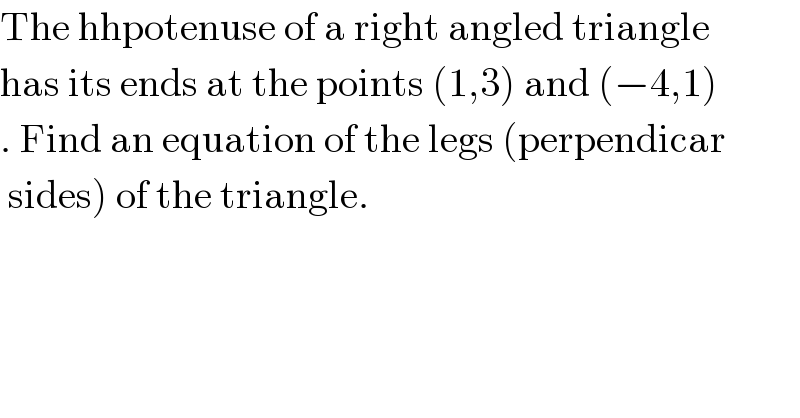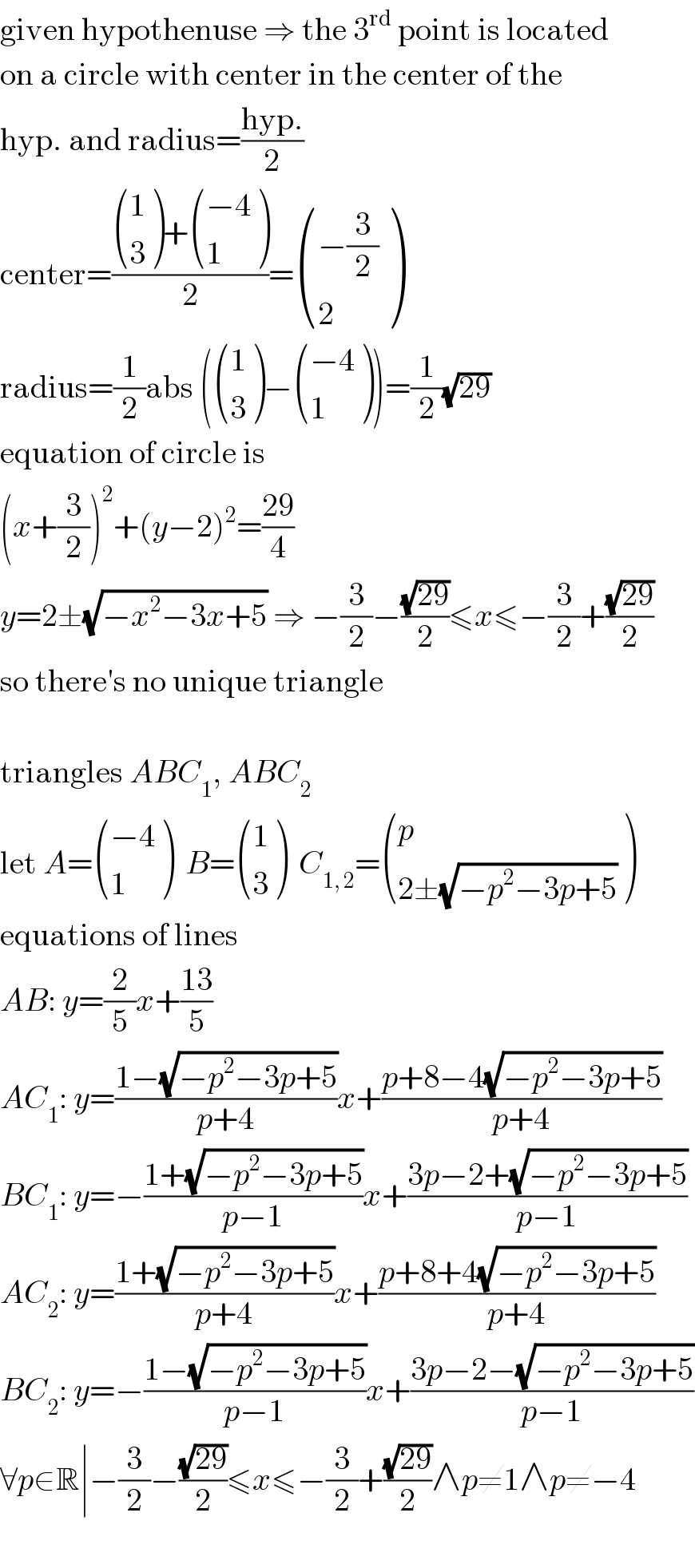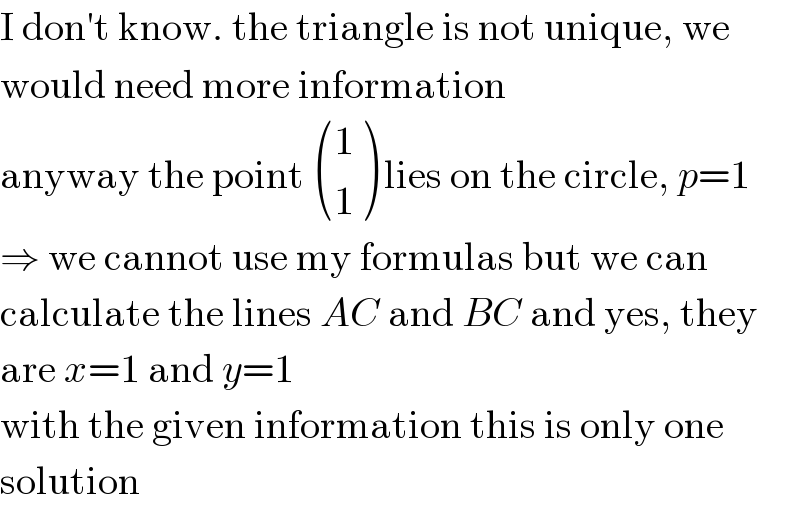
Question and Answers Forum
Question Number 74948 by vishalbhardwaj last updated on 04/Dec/19

Answered by MJS last updated on 04/Dec/19

Commented by vishalbhardwaj last updated on 04/Dec/19

Commented by MJS last updated on 04/Dec/19

Commented by MJS last updated on 04/Dec/19

Commented by vishalbhardwaj last updated on 04/Dec/19

Commented by vishalbhardwaj last updated on 05/Dec/19

Commented by MJS last updated on 05/Dec/19

